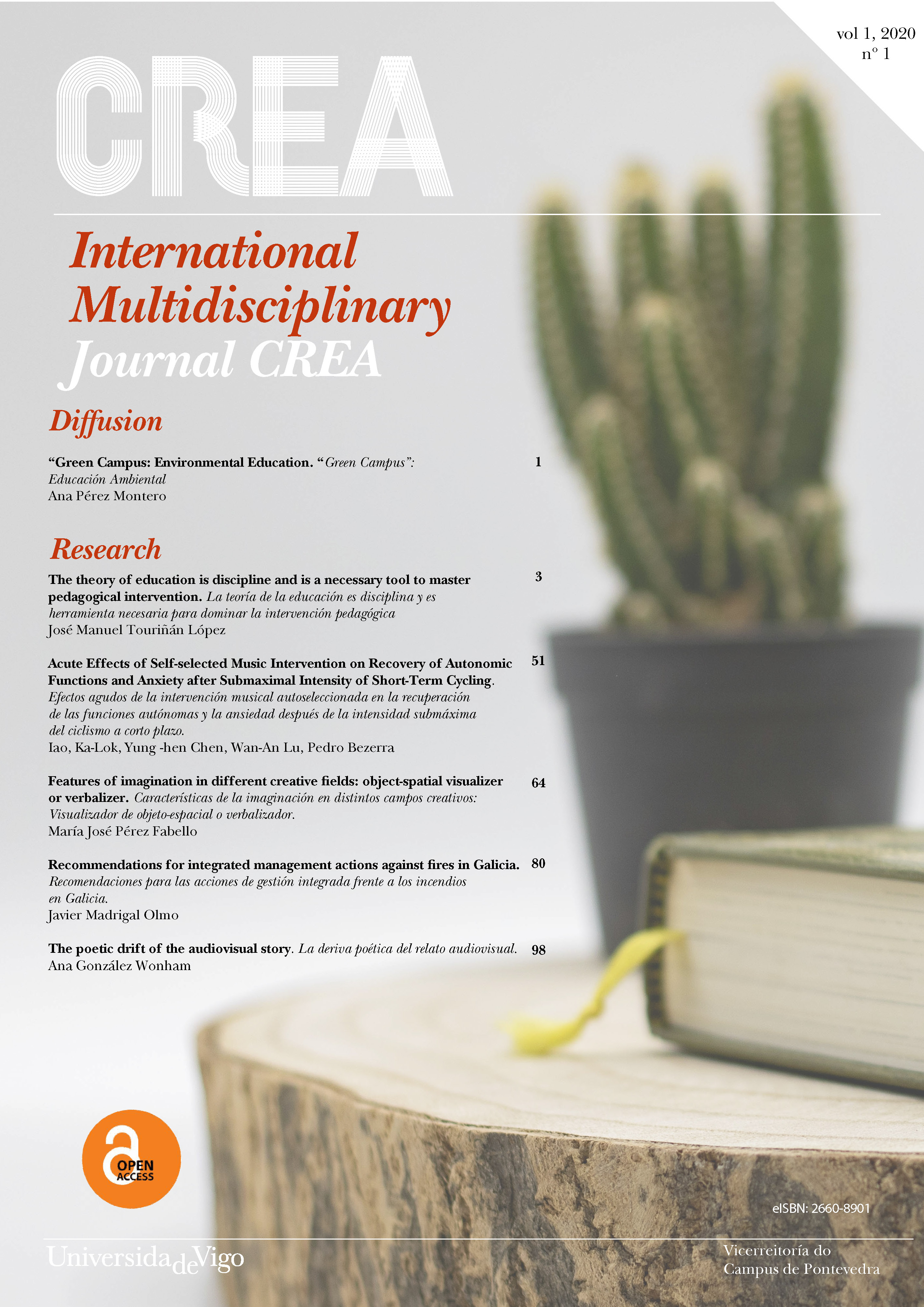Efectos agudos de la intervención musical autoseleccionada en la recuperación de las funciones autónomas y la ansiedad después de la intensidad submáxima del ciclismo a corto plazo
DOI:
https://doi.org/10.35869/ijmc.v1i1.2848Palabras clave:
Intervención musical, recuperación de la frecuencia cardíaca, variabilidad de la frecuencia cardíaca, intensidad submáxima, ejercicio en bicicletaResumen
Background: Music intervention is considered as an optimal modality to improve exercise motivation, exercise performance, and endurance capacity. The aim of this study is to investigate the acute effects of self-selected music intervention on post-exercise heart rate (HR), HR variability (HRV) and anxiety after a submaximal intensity of cycling exercise. Methods: Fifty-two healthy adults (males: n= 24, age: 20.6 ± 2 yrs; female: n= 28, 21.8 ± 2.1 yrs) were voluntarily participated this study. A counter-balanced design was used to examine submaximal intensity of cycling exercise with non-music or self-selected music trials at least 48 hours apart. Participants first visit the laboratory to determine individual self-selected music and to complete an incremental exercise test until HR response researched to 80% of heart rate reserve (HRreserve). The 80% HRreserve was used to control the exercise intensity during a subsequent 10-minute stationary cycling exercise. At the beginning of experiment, the participants performed a 5-min cycling warm-up exercise with self-pace. Afterwards, the participants rested in a sitting position for 5-min and then performed 10-min cycling exercise with intensity of 80% HRreserve. After the cycling exercise, 5-min HR recovery (HRR) and 10-min HRV was measured in a sitting position for 15-min. A situational anxiety mass scale (STAI-S) was used immediately after the cycling exercise. Music intervention was applied during 15-min post-exercise recovery. Results: The exercise HR and post-exercise HRV showed no significant differences between self-selected music trial and non-music trial in both groups. In self-selected music trial, HRR was significantly faster after the self-selected music trial than that of non-music trial in female. In addition, the STAI-S scores were significantly lower in the self-selected music trial than that of non-music trial in both groups. Conclusion: Self-selected music intervention can improve HRR in healthy female. Consideration to implement a self-selected music intervention after submaximal intensity of stationary cycling exercise to reduce post-exercise anxiety in male and female is warrant.
Descargas
Descargas
Publicado
Cómo citar
Número
Sección
Licencia
Derechos de Autor
Tras la aceptación de un artículo se pedirá a los autores que completen un Acuerdo de Publicación. La aceptación del acuerdo garantizará la difusión más amplia posible de información. En virtud de dicho acuerdo, los derechos de autor serán transferidos a la Sociedad/Institución si el manuscrito es aceptado para su publicación. Se requiere permiso de la Sociedad/Institución para su reventa o distribución fuera de la institución y para todos los demás trabajos derivados, incluyendo compilaciones y traducciones. Si se incluyen extractos de otras obras con derechos de autor, el autor (s) debe obtener permiso por escrito de los propietarios de derechos de autor y de crédito de la fuente (s) en el artículo.
Derechos de los usuarios
Todos los artículos publicados en la revista estarán inmediata y permanentemente accesibles para que cualquier usuario los pueda leer y descargar. La (Re)utilización permitida para terceros de los contenidos publicados estará definida por la siguiente licencia de uso Creative Commons: Creative Commons Reconocimiento-No comercial-Sin obras derivadas (CC BY-NC-ND). Para fines no comerciales, permite a otros distribuir y copiar el artículo. También permite su inclusión en un trabajo colectivo (como una antología), siempre que se cite el autor (s) y no se altere o modifique el artículo.
Tarifa de publicación
El autor de los artículos aceptados no debe pagar por su publicación. La Sociedad o la Institución propietaria de la revista financia los costes de producción de los manuscritos.








